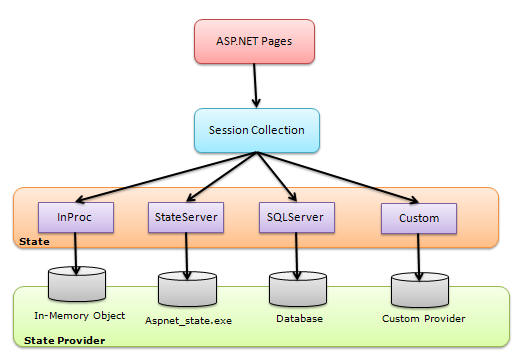Asp Net Session State Serialization

ASP.NET session state supports several different storage options for session data. Each option is identified by a value in the enumeration. The following list describes the available session state modes: • InProc mode, which stores session state in memory on the Web server. This is the default.
• StateServer mode, which stores session state in a separate process called the ASP. Beaufort Cipher Java Program more. NET state service. This ensures that session state is preserved if the Web application is restarted and also makes session state available to multiple Web servers in a Web farm. • SQLServer mode stores session state in a SQL Server database.
This ensures that session state is preserved if the Web application is restarted and also makes session state available to multiple Web servers in a Web farm. • Custom mode, which enables you to specify a custom storage provider. • Off mode, which disables session state. You can specify which mode you want ASP.NET session state to use by assigning a enumeration values to the mode attribute of the element in your application's Web.config file. Modes other than InProc and Off require additional parameters, such as connection-string values as discussed later in this topic. You can view the currently selected session state by accessing the value of the property. Carte Tomtom Crack there.
Use ASP.NET session state to store and retrieve values for a user. Unable to serialize the session state. In 'StateServer' and 'SQLServer' mode, ASP.NET will serialize the session state objects, and as a result non-serializable objects or MarshalByRef objects are not permitted. Underpinnings of the Session State Implementation in ASP.NET. To perform data serialization and deserialization, ASP.NET uses two methods depending on the types. Session state providers provide the interface between. Core ASP.NET session state services are provided. On the session if the serialization.

StateServer mode stores session state in a process, referred to as the ASP.NET state service, that is separate from the ASP.NET worker process or IIS application pool. Using this mode ensures that session state is preserved if the Web application is restarted and also makes session state available to multiple Web servers in a Web farm. To use StateServer mode, you must first be sure the ASP.NET state service is running on the server used for the session store. The ASP.NET state service is installed as a service when ASP.NET and the.NET Framework are installed. The ASP.Net state service is installed at the following location: systemroot Microsoft.NET Framework versionNumber aspnet_state.exe To configure an ASP.NET application to use StateServer mode, in the application's Web.config file do the following: • Set the mode attribute of the element to StateServer. • Set the stateConnectionString attribute to tcpip= serverName:42424. Note Objects stored in session state must be serializable if the mode is set to StateServer.
For information on serializable objects, see the class. To use StateServer mode in a Web farm, you must have the same encryption keys specified in the element of your Web configuration for all applications that are part of the Web farm. For information on how to create machine keys, see article 313091, 'How to create keys by using Visual Basic.NET for use in Forms authentication,' in the Microsoft Knowledge Base at http://support.microsoft.com. Note Objects stored in session state must be serializable if the mode is SQL Server. For information on serializable objects, see the class.